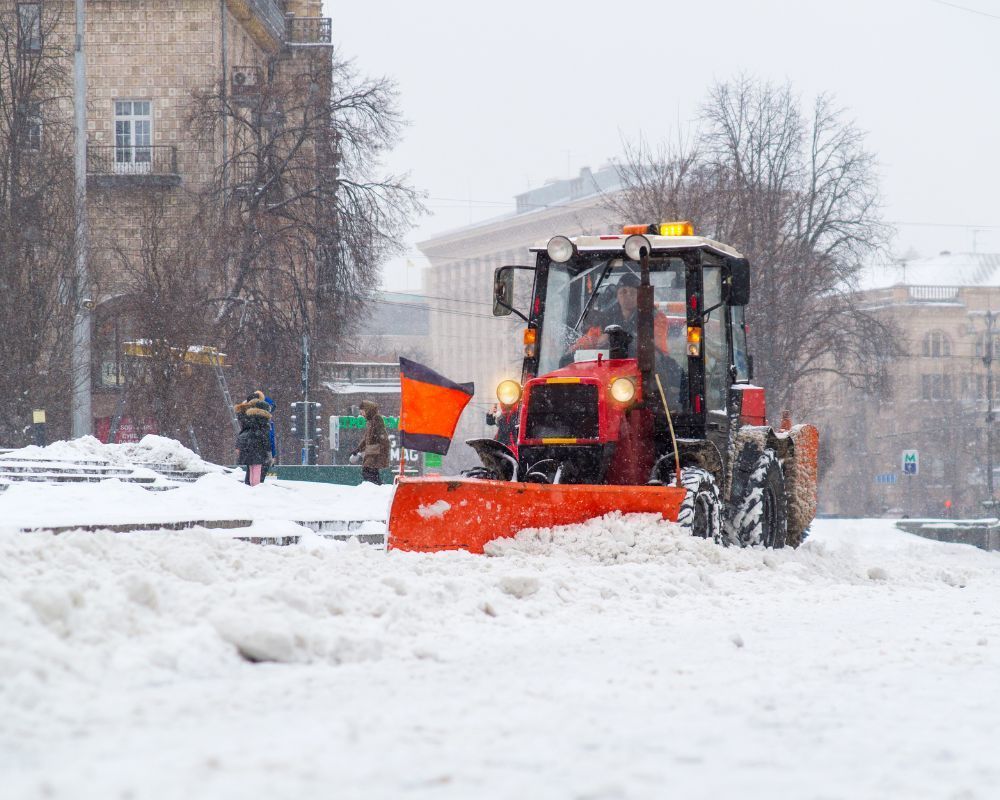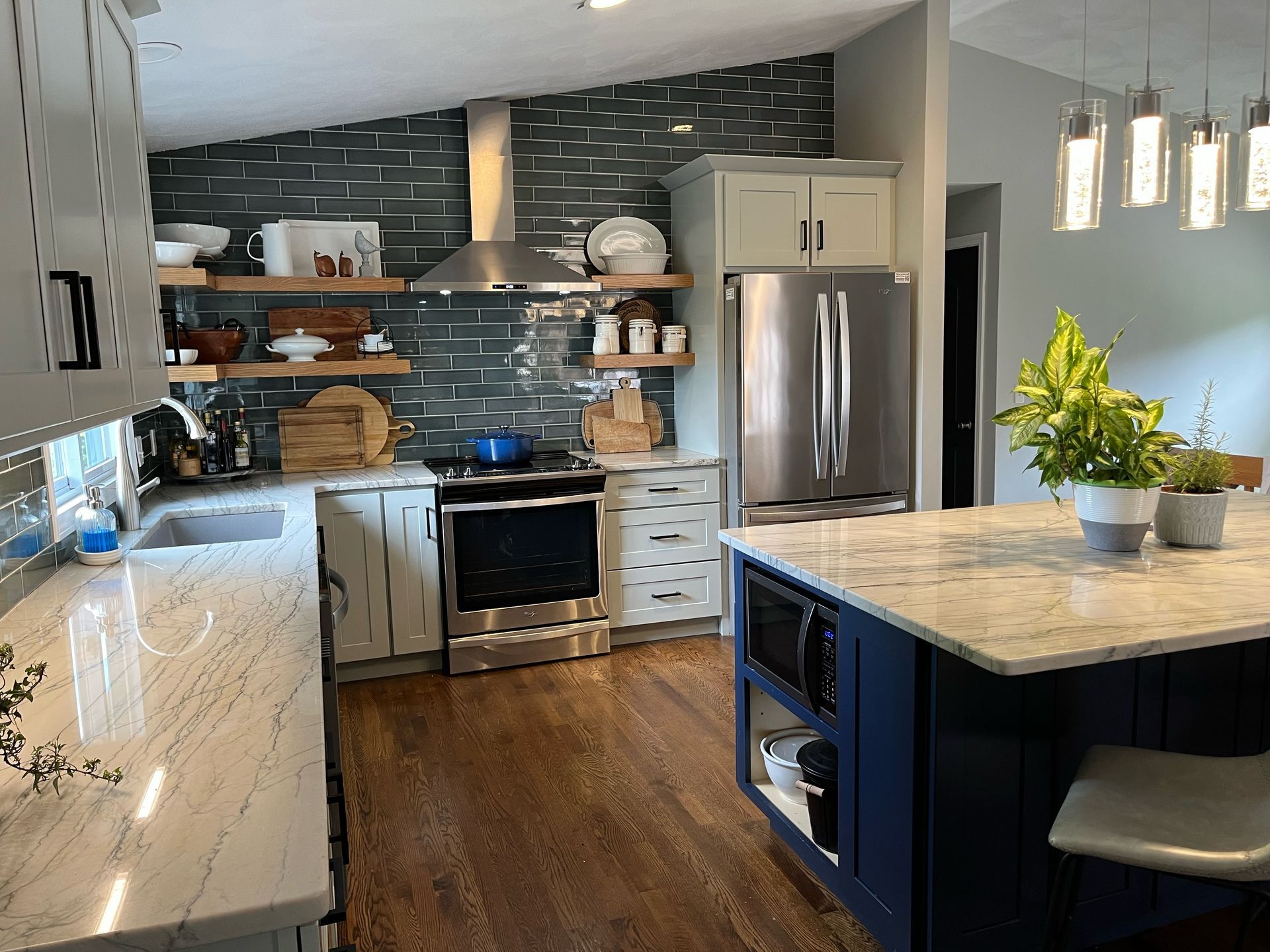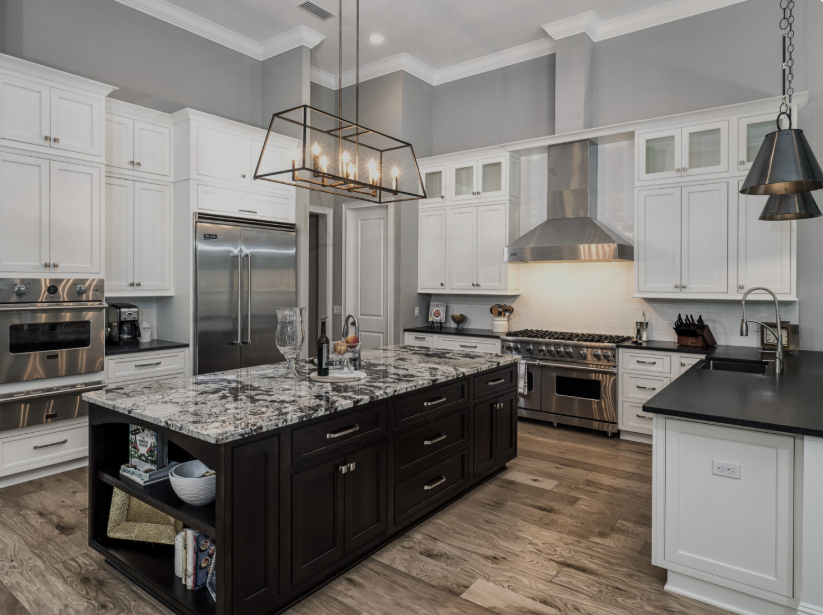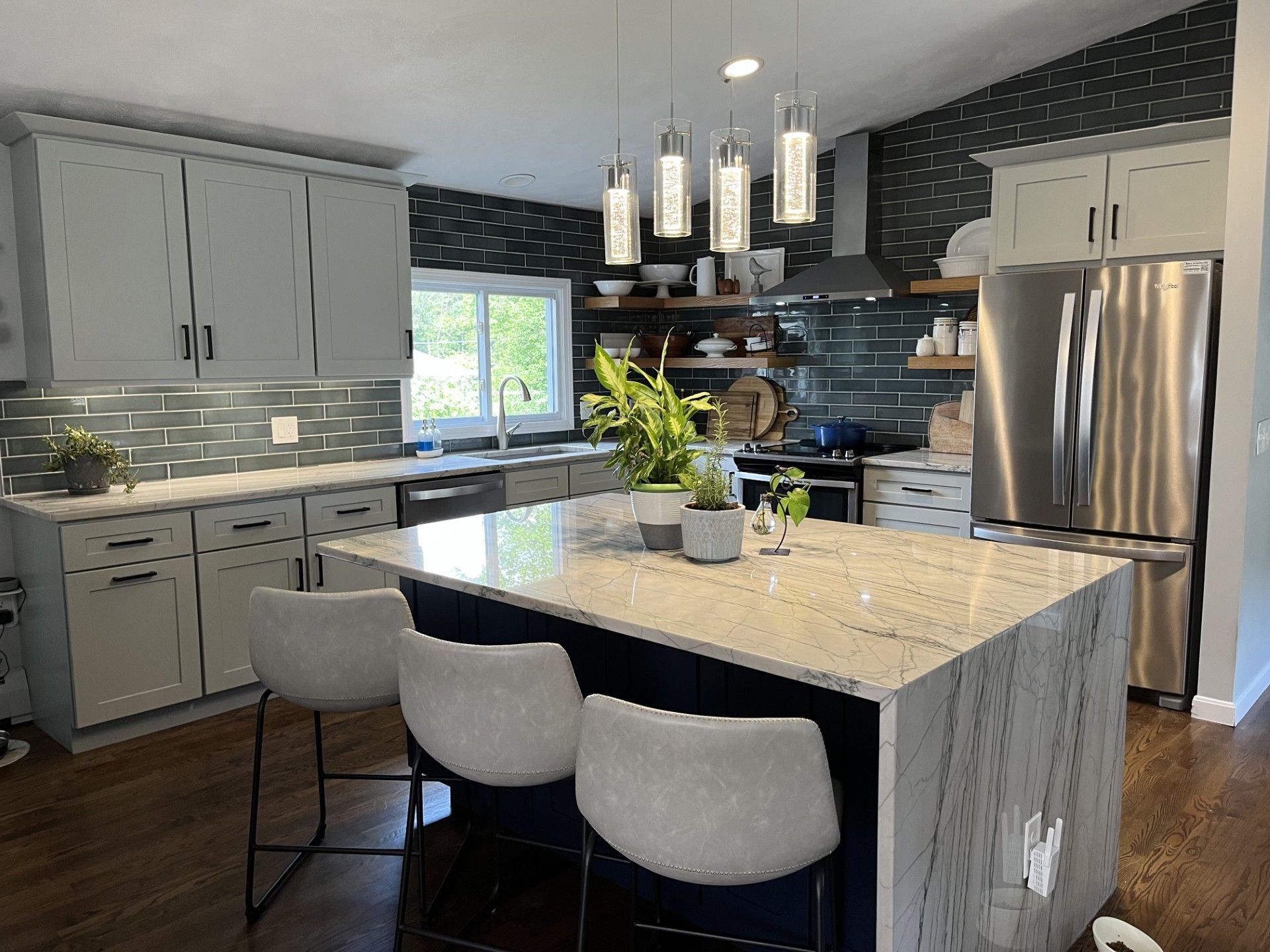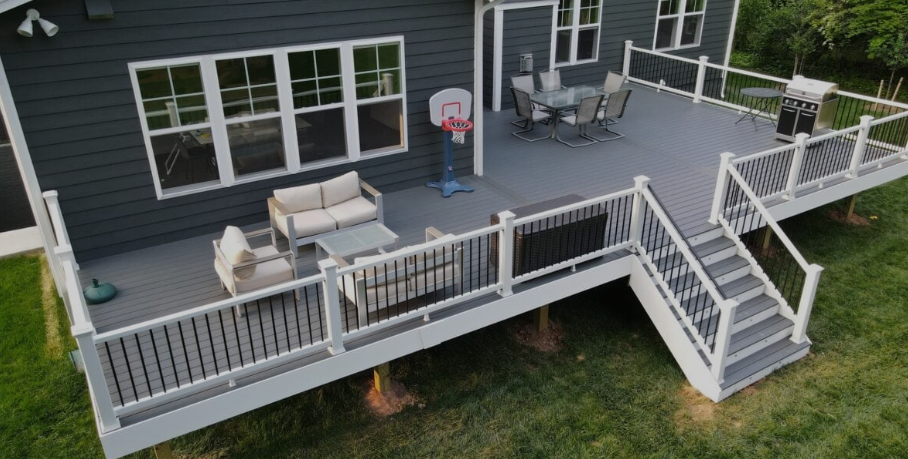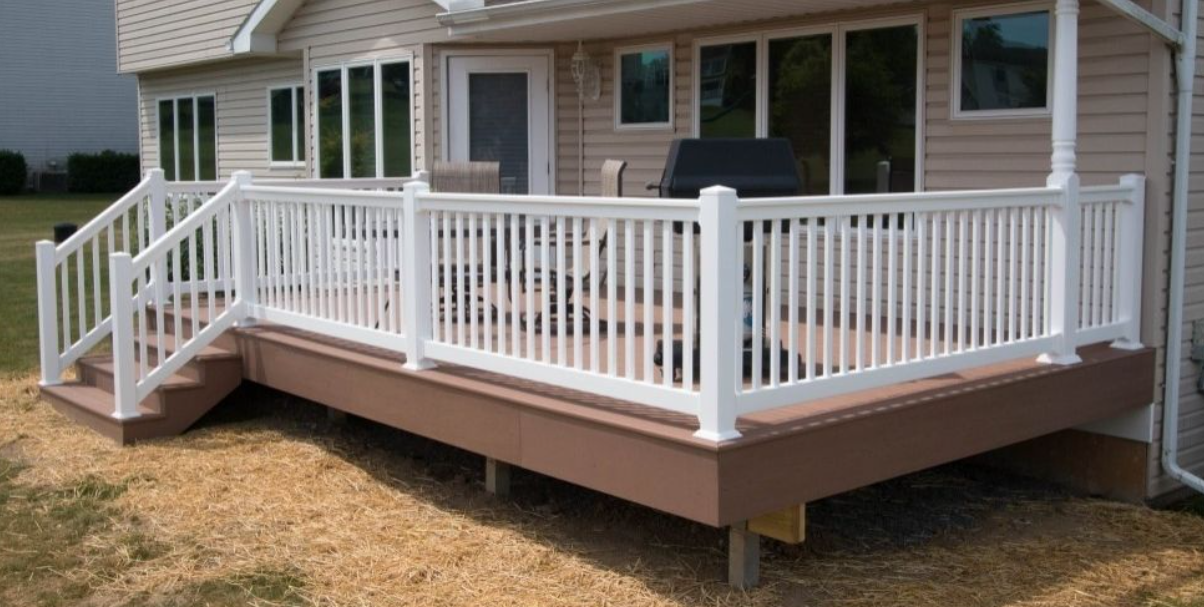What’s the Best Base for a Patio in Rhode Island Soil?
A multi-layer crushed stone base with enhanced drainage is the best foundation for patios in Rhode Island soil. Due to the Ocean State's predominant clay soils and challenging weather conditions, most RI patios require:
Recommended RI Patio Base System:
- Excavation: 8-12 inches deep (deeper than standard due to clay soil)
- Geotextile fabric: Essential for clay soil separation
- Base layer: 6 inches of 3/4-inch crushed stone (#57)
- Intermediate layer: 2-3 inches of 3/8-inch crushed stone (#8)
- Bedding layer: 1-2 inches of stone dust or concrete sand
- Total system depth: 9-17 inches depending on soil conditions
This system addresses Rhode Island's clay soil drainage issues, freeze-thaw cycles, and high water table challenges that cause standard patio bases to fail.
Understanding Rhode Island's Challenging Soil Conditions
Rhode Island Soil Composition and Distribution
Rhode Island's geological history created unique soil challenges that dramatically impact patio construction success:
Clay-Dominated Soils: Approximately 60% of Rhode Island sits on clay-heavy soils, particularly in:
- Providence County: Dense clay throughout urban and suburban areas
- Kent County: Clay deposits with poor drainage characteristics
- Western Rhode Island: Glacial clay deposits in Coventry, West Greenwich, Exeter
Glacial Till Deposits: Legacy ice age materials create:
- Mixed soil composition with unpredictable drainage
- Rocky inclusions complicating excavation
- Variable compaction characteristics within single properties
- Seasonal water retention in clay pockets
Coastal Sandy Soils: Limited to immediate shoreline areas:
- Better drainage but still require proper base due to high water table
- Salt exposure requiring corrosion-resistant materials
- Erosion susceptibility during storms
Why Standard Patio Bases Fail in RI Soil
Clay Soil Problems:
- Water retention causes frost heave and patio lifting
- Poor drainage leads to standing water and settlement
- Expansion and contraction with moisture changes
- Difficult compaction without proper preparation
Seasonal Challenges:
- Spring thaw creates saturated soil conditions
- Freeze-thaw cycles (average 40 per winter) stress inadequate bases
- Heavy precipitation (47 inches annually) overwhelms poor drainage
- High humidity (70% average) maintains soil moisture
Best Patio Base Systems for Different RI Soil Types
Clay Soil Base System (Most Common in RI)
Enhanced Drainage Base for Clay:
Step 1: Deep Excavation
- Depth: 10-12 inches minimum (vs. 6-8 inches in good soil)
- Width: Extend 6 inches beyond patio edges
- Soil removal: Remove all clay soil from excavation area
- Subgrade prep: Compact remaining soil to 95% density
Step 2: Drainage Enhancement
- Geotextile fabric: Heavy-duty separation fabric essential
- French drain integration: Consider perimeter drainage in problem areas
- Slope creation: Minimum 1/4 inch per foot away from structures
- Moisture barrier: May require vapor barrier in extreme cases
Step 3: Multi-Layer Base Construction
- Primary base: 6 inches of 3/4-inch crushed stone (#57)
- Compaction: Each 2-inch lift compacted to 95% density
- Intermediate layer: 3 inches of 3/8-inch crushed stone (#8)
- Fine bedding: 1-2 inches of stone dust or concrete sand
Total System Depth: 10-17 inches
Mixed Soil Base System (Glacial Till Areas)
Adaptive Base for Variable Conditions:
Assessment Phase:
- Soil testing to identify clay pockets and rocky areas
- Drainage evaluation during wet conditions
- Compaction testing of existing subgrade
- Water table determination during spring conditions
Modified Installation:
- Variable excavation deeper in clay areas (8-12 inches)
- Selective soil replacement in problem zones
- Enhanced drainage where clay is encountered
- Standard base system in well-draining areas
Integration Techniques:
- Transition zones between different base depths
- Consistent final grade across entire patio area
- Uniform compaction regardless of base variations
Sandy Coastal Soil Base System
Drainage-Focused Base for Coastal Areas:
Coastal Considerations:
- Salt exposure requires marine-grade materials where applicable
- High water table may require deeper excavation
- Erosion protection during installation and long-term
- Hurricane preparation with enhanced anchoring
Modified Base System:
- Standard depth: 8-10 inches total
- Drainage emphasis: Enhanced slope and runoff management
- Material selection: Salt-resistant aggregates preferred
- Stabilization: May require binding agents in sandy conditions
Material Selection for Rhode Island Conditions
Primary Base Materials for RI Soil
3/4-Inch Crushed Stone (#57 Stone)
- Angular particles provide excellent interlocking
- Superior drainage compared to rounded stone
- Local availability from Rhode Island quarries
- Proven performance in New England climate
- Cost-effective for large base requirements
Best RI Sources:
- Aggregate Industries (North Smithfield)
- Independent Materials (Burrillville)
- Local quarries throughout the state
3/8-Inch Crushed Stone (#8 Stone)
- Transition layer between coarse base and fine bedding
- Improved surface preparation for final installation
- Enhanced compaction filling voids in base layer
- Better load distribution across foundation
Bedding Layer Options for RI Conditions
Stone Dust (Quarry Dust)
- Excellent for clay soil conditions due to binding properties
- Self-compacting in Rhode Island's humid climate
- Weather resistant handles freeze-thaw cycles
- Local sourcing available throughout RI
Concrete Sand
- Consistent particle size for uniform bedding
- Good drainage properties
- Easy installation and leveling
- Widely available across Rhode Island
Polymeric Sand (Premium Option)
- Weed prevention important in humid RI climate
- Joint stabilization resists washout from heavy rains
- Reduced maintenance long-term
- Higher initial cost but labor savings over time
Materials to Avoid in RI Soil
Rounded River Rock:
- Poor compaction in clay soil conditions
- Inadequate stability for structural loads
- Movement under freeze-thaw conditions
Bank Run Gravel:
- High clay content defeats drainage purpose
- Inconsistent particle size affects compaction
- Susceptible to frost heave in RI winters
Crushed Concrete (unless specifically tested):
- Variable quality depending on source
- Potential contamination issues
- May not meet local codes in some RI municipalities
Installation Techniques for RI Soil Conditions
Pre-Installation Site Assessment
Soil Testing Methods:
- Percolation test: Dig test holes, fill with water, measure drainage rate
- Clay identification: Squeeze test and visual inspection
- Compaction testing: Assess existing soil density
- Water table evaluation: Check during wet season conditions
Drainage Evaluation:
- Surface water flow patterns during rain
- Existing drainage systems and their capacity
- Seasonal water issues from neighbors or previous experience
- Municipal storm water connections and regulations
Excavation Best Practices for RI Soil
Clay Soil Excavation:
- Timing: Avoid wet conditions when clay becomes unworkable
- Equipment: Track excavators work better than wheeled in clay
- Depth control: Use laser level for consistent depths
- Soil disposal: Clay soil difficult to reuse, plan for removal
Mixed Soil Handling:
- Selective removal of clay while preserving good soil
- Stockpiling: Separate materials for potential reuse
- Access planning: Consider equipment needs for variable conditions
Compaction Techniques for RI Conditions
Clay Subgrade Preparation:
- Moisture control: Achieve optimal moisture content (not too wet/dry)
- Mechanical compaction: Plate tampers or roller compactors
- Testing: Verify 95% standard proctor density
- Surface preparation: Smooth, uniform grade before base installation
Base Layer Compaction:
- Lift thickness: Maximum 2-inch lifts for proper compaction
- Multiple passes: 4-6 passes minimum with plate tamper
- Edge attention: Extra compaction at patio perimeters
- Quality control: Test compaction regularly during installation
Drainage Integration for RI Patio Bases
Surface Drainage Requirements
Slope Requirements:
- Minimum grade: 1/4 inch per foot away from structures
- Enhanced slope: 3/8 inch per foot in clay soil areas
- Multi-directional: Slope away from house and toward drainage
- Transition areas: Smooth grade changes to existing surfaces
Runoff Management:
- Calculation: Determine runoff volume for RI precipitation levels
- Direction: Plan water flow to appropriate discharge areas
- Velocity control: Prevent erosion from concentrated flow
- Integration: Connect with existing yard drainage systems
Subsurface Drainage Solutions
French Drain Integration:
- Perimeter drains: Around patio edges in clay soil conditions
- Under-base drains: Beneath patio in severe drainage situations
- Connection: Tie into existing drainage or create discharge points
- Maintenance access: Plan for future cleaning and inspection
Drainage Pipe Specifications:
- Size: 4-inch minimum for residential applications
- Material: PVC or HDPE perforated pipe
- Bedding: Surround with clean gravel
- Slope: Minimum 1% grade toward discharge
Regional Variations Across Rhode Island
Providence County Considerations
Urban Challenges:
- Clay soil prevalence throughout the county
- Limited drainage in developed areas
- Utility conflicts requiring careful excavation
- Permit requirements for drainage modifications
Specific Areas:
- Providence: Dense clay, municipal drainage integration required
- Warwick: Mixed clay conditions, coastal considerations in eastern areas
- Cranston: Heavy clay throughout, enhanced drainage essential
- Pawtucket: Urban clay soils, space constraints for equipment
Kent County Soil Patterns
Geological Characteristics:
- Consistent clay deposits across most of the county
- Seasonal water table fluctuations
- Rural areas with more flexibility for drainage solutions
- Agricultural history affecting soil composition
Installation Considerations:
- West Warwick: Clay soil with seasonal wetness
- Coventry: Mixed glacial till requiring site-specific solutions
- East Greenwich: Clay near coast, sandy toward shoreline
Washington County Variations
Diverse Soil Conditions:
- Coastal sandy soils near shoreline communities
- Inland clay deposits in western portions
- Rocky glacial till in some areas
- High water table near coastal areas
Community-Specific Challenges:
- Narragansett: Sandy coastal soils, high water table
- South Kingstown: Mixed conditions, university area development
- Westerly: Coastal drainage challenges, salt exposure
- Charlestown: Sandy soils with drainage considerations
Seasonal Installation Considerations
Optimal Installation Timing
Spring Installation (April-May):
- Pros: Soil moisture content optimal for compaction
- Cons: High demand period, weather delays possible
- Soil conditions: May reveal winter damage to subgrade
Summer Installation (June-August):
- Pros: Stable weather, consistent soil conditions
- Cons: Clay soil may be too dry for optimal compaction
- Preparation: May require soil moisture conditioning
Fall Installation (September-October):
- Pros: Stable conditions, good for final settling before winter
- Cons: Limited time before frost, material availability issues
- Benefits: Allows full settling before next spring's freeze-thaw
Weather Impact on Installation
Wet Weather Challenges:
- Clay soil becomes unworkable when saturated
- Equipment access limited in soft conditions
- Compaction impossible in oversaturated soil
- Drainage testing not accurate during active precipitation
Dry Weather Considerations:
- Clay soil too hard for proper excavation and compaction
- Dust control during excavation and material handling
- Moisture conditioning may be required for optimal compaction
Cost Analysis for RI Soil Conditions
Enhanced Base System Costs
Standard vs. Enhanced Base Comparison (per square foot):
Standard Base (6-8 inches total):
- Materials: $2.50-4.00 per sq ft
- Labor: $3.00-5.00 per sq ft
- Total: $5.50-9.00 per sq ft
Enhanced RI Clay Soil Base (10-12 inches total):
- Materials: $4.00-6.50 per sq ft
- Labor: $4.50-7.00 per sq ft
- Geotextile fabric: $0.50-1.00 per sq ft
- Enhanced drainage: $1.00-2.00 per sq ft
- Total: $10.00-16.50 per sq ft
Long-Term Value Analysis
Cost of Base Failure:
- Patio replacement: $15-25 per sq ft
- Foundation damage: $5,000-15,000+
- Landscape restoration: $2,000-5,000
- Total potential loss: $20,000-50,000+ for major failures
Enhanced Base Investment Protection:
- Prevents costly failures that commonly occur with inadequate bases
- Extends patio lifespan from 10-15 years to 25-30 years
- Maintains property value through proper installation
- Reduces maintenance costs over time
Municipal Requirements and Permits
Rhode Island Building Code Compliance
Structural Requirements:
- Load-bearing capacity for intended use
- Proper drainage away from foundations
- Frost protection below frost line where applicable
- Safety considerations for elevated patios
Drainage Regulations:
- Stormwater management for large patio installations
- Runoff control preventing neighbor property impacts
- Municipal system integration where required
- Coastal zone compliance near water bodies
Permit Requirements by Municipality
Providence:
- Permits required for patios over 200 sq ft
- Drainage plans may be required for clay soil conditions
- Inspection requirements for structural and drainage compliance
Newport:
- Historic district approvals for visible installations
- Coastal considerations for shoreline properties
- Enhanced requirements for tourist area visibility
Warwick:
- Standard residential permits for larger installations
- Coastal zone requirements near Narragansett Bay
- Municipal drainage integration in some areas
Quality Control and Testing
Installation Quality Verification
Compaction Testing:
- Nuclear density gauge for accurate compaction measurement
- Sand cone tests for field verification
- Plate load tests for bearing capacity confirmation
- Visual inspection for proper material gradation
Drainage Verification:
- Water infiltration tests during installation
- Grade verification with laser levels
- Flow testing of integrated drainage systems
- Final inspection before patio material installation
Long-Term Performance Monitoring
Annual Inspection Points:
- Settlement monitoring especially after first winter
- Drainage performance during heavy rain events
- Joint stability and material retention
- Edge restraint integrity preventing lateral movement
Maintenance Requirements:
- Joint sand replenishment as needed
- Drainage system cleaning annually
- Surface cleaning to maintain appearance
- Minor adjustments for small settlements
Our team brings extensive experience with the Ocean State's clay soils, drainage challenges, and municipal requirements across all Rhode Island communities. We understand the critical importance of proper base preparation and use only proven techniques and high-quality materials to ensure your patio provides decades of reliable performance. From soil assessment through final installation, we handle every aspect of creating a foundation that will withstand Rhode Island's demanding climate conditions.
Contact us today for expert guidance on your patio project and professional installation that's engineered for Rhode Island soil success.
